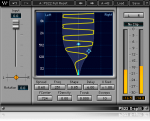So I've only had the chance to try this once and it was for a short period of time so I couldn't iron out the wrinkles. I'm curious if anybody has every thought of this or tried this before.
I took two takes of the same acoustic guitar part and panned them left and right (common technique). What I ended up trying was cloning these channels, then EQing and arranging them so that the low frequencies from the first take and the high frequencies from the second take were panned hard left, while the high frequencies from the first take and low frequencies from the second take were panned hard right. It blended the two takes in an interesting way, but I did end up with a bit of a phase issue. Any thoughts on this? Was it a terrible idea or could I be onto something?
I took two takes of the same acoustic guitar part and panned them left and right (common technique). What I ended up trying was cloning these channels, then EQing and arranging them so that the low frequencies from the first take and the high frequencies from the second take were panned hard left, while the high frequencies from the first take and low frequencies from the second take were panned hard right. It blended the two takes in an interesting way, but I did end up with a bit of a phase issue. Any thoughts on this? Was it a terrible idea or could I be onto something?




